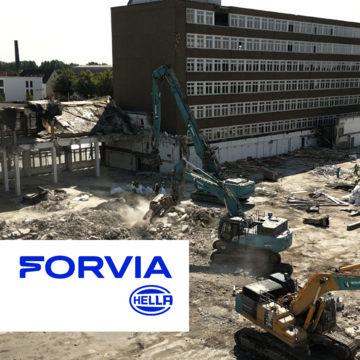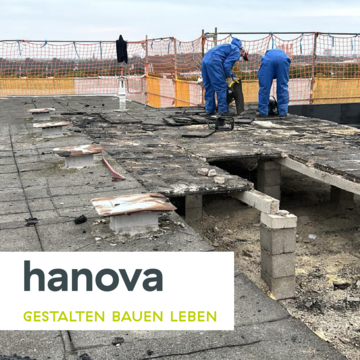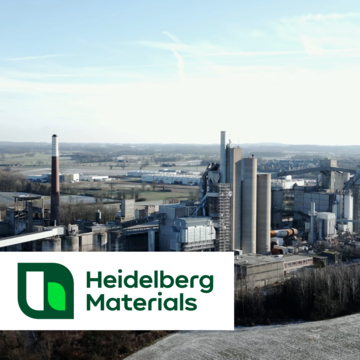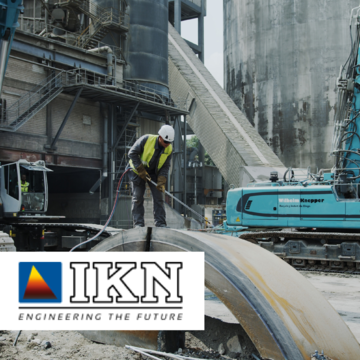Silo cleaning of the challenging kind
Knepper develops an innovative solution for the safe cleaning of HeidelbergCement AG's cement silos.
Work carried out
- Manual cleaning of the cement powder silo to remove product residues using the existing discharge hoppers
- Stuck material was brought to a transportable size by our employees under extended PPE so that flowable material could slide in
- At the discharge hoppers, the material was fed onto our conveyor belts via chutes and thus separated from the rest of the production process
Machines in use
- Dumpers and scaffolding
- Conveyor belts
- Small Bobcat
The project in detail
Special challenges require extraordinary solutions. Word has already spread about Knepper's "can't do, doesn't exist" mentality. More and more clients are turning to the demolition and dismantling specialist because they are looking for a solution for a particularly challenging project. Maximum planning security is of central importance for customers in every project, because any delay means financial loss. Not an easy task for Knepper's planning team for a project that has never been done before. With the cleaning of a silo belonging to HeidelbergCement AG at the Schelklingen cement plant, in which around 1,300 tons of material had solidified, Knepper demonstrated not only its high level of solution expertise but also that occupational safety is a top priority, even under difficult conditions
Head of department emphasizes the importance of occupational safety when cleaning silos
For Cement Grinding, Packing and Loading Department Manager Dr. Robert Schnatz, occupational safety was very important for the project. "The work was not without danger, because we didn't know how much loose material was still in the lower part of the silo," he says, describing the difficult initial situation. "In addition, we had never cleaned a silo in this way before and the usual methods (loosening blasting and industrial climbers) didn't work. We needed a partner with a lot of experience to find a feasible solution with the highest safety measures and to be able to carry it out within a certain time frame. The site manager and his team did a great job and, most importantly, without any incidents."
Time management in Knepper's silo cleaning project crucial for HeidelbergCement AG
The project was also time-critical, because if one of the 28 cement silos at HeidelbergCement AG breaks down, the trucks jam up during the peak season. Waiting time costs additional money. A functioning silo is therefore an important link in the chain for meeting construction deadlines and an image and economic factor for HeidelbergCement. This is why Knepper's planning and calculation of the project were so important in terms of time management.
Out-of-the-box solution
Knepper develops interdisciplinary solutions and thinks across departments and often across sectors. When it came to cleaning the 8,000 t silo, where the otherwise powdery cement had solidified in the lower area and piled up to a height of around 12 to 14 meters, there was only one solution that called for a wide range of skills. Robert Schnatz spoke to Carsten Knepper about his "problem mountain" at the Schelklingen cement works. "From working together on various projects, I knew that the Knepper team was very solution-oriented and open to challenges," he explains. Initially, they both pursued the idea of using a demolition robot. As both access openings were impassable (even for the smallest model available on the market), it quickly became clear that the mountain of material could only be removed by hand, from top to bottom. The interior of the cement silo consists of seven outlet cones in the lower area, into which the powder is directed via chutes into the outlets. The cement is discharged to the silo vehicles via the outlet openings. These openings could not simply be opened, as it was difficult to estimate how many tons of material would have spilled out. It was therefore essential to find a procedure that would allow the material flow and discharge to be controlled and managed.
Highest security level
A number of risk factors made meticulous and elaborate planning of the project necessary in order to ensure maximum work safety at all times. As cement powder is so fine that you can sink into it and it was not possible to predict where in the silo the material would be loose or solid, a self-supporting scaffold with specially calculated statics was planned as a solution. This was the only way to ensure that Knepper employees could stand and work safely in the silo. In addition, all conceivable protective measures were taken to meet the high safety requirements of HeidelbergCement AG. The rule was never to work alone, but only in pairs and on the scaffolding with additional height safety equipment. Complete protective equipment with dust suits and air-supported helmets protected the five Knepper demolition specialists from dust and possible chemical burns. The silo was brightly lit with spotlights to ensure good visibility and safe working conditions in the otherwise lightless interior. The logistical part of the concept consisted of an approximately 12 m long conveyor line, which consisted of several conveyor belts and extended from the outlet openings to a heavy goods vehicle (HGV), which was to collect the loosened material. The planned process was initially tested for 14 days and ultimately found to be safe to carry out.
The next step was to clean the silo by hand. Two employees on the cantilevered scaffolding gradually chiseled and loosened the material. Electric hand-held chisels were also used on the silo walls to remove the adhering material. At the same time, one employee kept a constant watch on the access hatch and checked that his colleagues inside were OK. The other two employees worked on the outlets. They regularly and very carefully opened the latches to allow the loosened material to flow out. Each time, around 3,000 to 4,000 liters of cement escaped at once, which had to be transported to an SKW via conveyor belts. The material that fell next to it was transported back onto the conveyor belt by loader. Within three months, the entire silo was cleaned without any incidents. The customer, HeidelbergCement, had expected more difficulties and was impressed by how easily a problem of this magnitude could be solved with the help of a creative demolition specialist like Knepper. Robert Schnatz was also particularly impressed by the discipline of the Knepper team: "Despite the difficult visibility conditions and freedom of movement when working in the silo, everyone adhered very consistently to the work safety measures."
Recycling process
The dissolved material from the silo was fed back into the normal grinding process and used for the production of new cement. The experience gained from this challenging order makes it easier for both sides to calculate a possible follow-up project. The solution is in place and can be repeated at any time. "An identical silo is due for cleaning this year," warns Robert Schnatz.
Your contact person
SALES DEMOLITION AND DISMANTLING
Phone: +49 2941 2841-310
E-Mail: vertrieb@knepper-gruppe.de
Quotes
"From working together on various projects, I knew that the Knepper team is very solution-oriented and open to challenges."
Dr.-Ing. Robert Schnatz
Head of Cement Grinding, Packing and Loading Department










